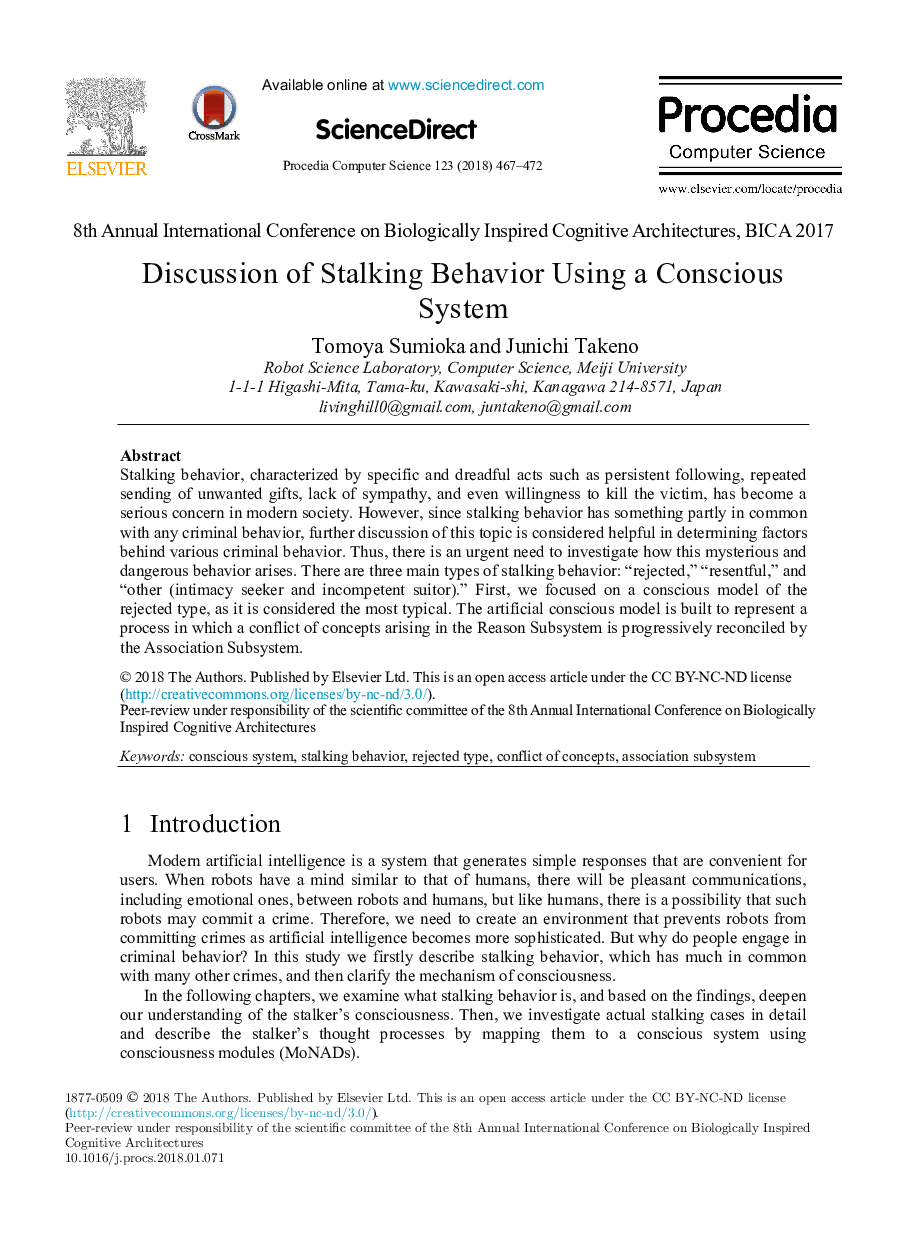| Article ID | Journal | Published Year | Pages | File Type |
|---|---|---|---|---|
| 6900942 | Procedia Computer Science | 2018 | 6 Pages |
Abstract
Stalking behavior, characterized by specific and dreadful acts such as persistent following, repeated sending of unwanted gifts, lack of sympathy, and even willingness to kill the victim, has become a serious concern in modern society. However, since stalking behavior has something partly in common with any criminal behavior, further discussion of this topic is considered helpful in determining factors behind various criminal behavior. Thus, there is an urgent need to investigate how this mysterious and dangerous behavior arises. There are three main types of stalking behavior: “rejected,” “resentful,” and “other (intimacy seeker and incompetent suitor).” First, we focused on a conscious model of the rejected type, as it is considered the most typical. The artificial conscious model is built to represent a process in which a conflict of concepts arising in the Reason Subsystem is progressively reconciled by the Association Subsystem.
Keywords
Related Topics
Physical Sciences and Engineering
Computer Science
Computer Science (General)
Authors
Tomoya Sumioka, Junichi Takeno,
